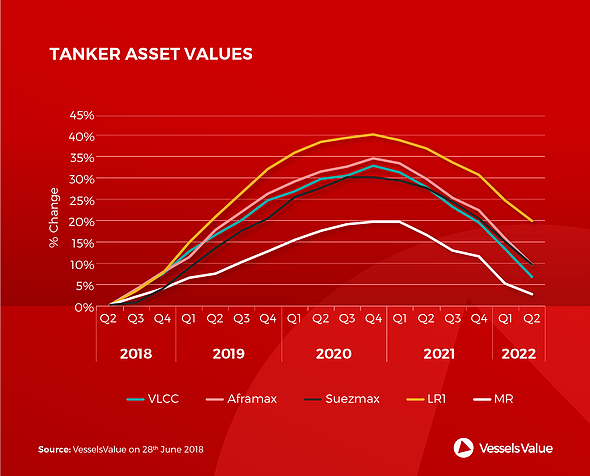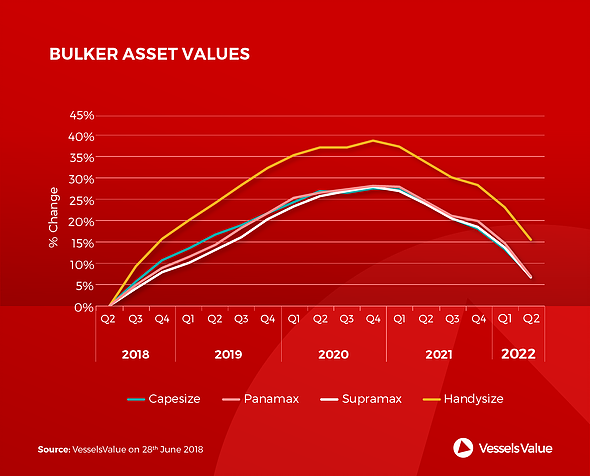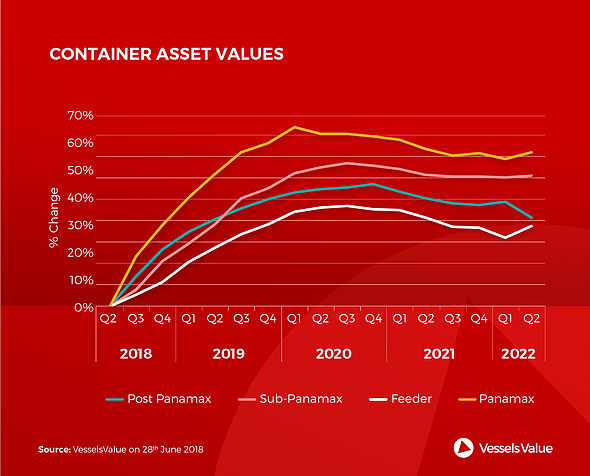Favorable Outlook for Young Ship Prices
The price of prime aged vessels, young vessels around five years old, is expected to rise over the next two years. Putting extended trade disputes aside, most market segments have favorable tailwinds. The contraction of yard capacity is expected to support the replacement value of ships, while short term earnings have either bottomed, or started to recover in most markets.
The charts below show the expected performance of a fixed age five-year-old asset.
Tanker asset values look set to climb as the current culling of the fleets older units will help lead to a finer balance between supply and demand. The decision by OPEC and Saudi Arabia to put more barrels into the market should increase the cargo count in the Arabian Gulf. This will lead to a rosier outlook for the second half of the year than many predicted.

LR1s look poised to see the highest gains. The run up in demand for distillate flows ahead of the 2020 bunker switch over should benefit large clean product tankers. LR1s are currently seeing depressed asset values, and the expected value on mean reversion alone should benefit owners.

Dry bulk asset values are seeing the benefit of a higher earnings environment brought on by a steady rise in ton mile demand and fleet recycling efforts in 2016 and 2017. Upside remains as scheduled deliveries of outstanding orders are moderate.

The container ship market should see a rebound as the consolidation of commercial controllers is leading to more sustainable rate structure. Asset values are expected to retain their increases through the end of the forecast window due to the small orderbooks in most segments (ULCV excluded).
Note: Our forecasts are based on our Fixed Age Values, which never age. We basically stitch together vessels which are launched five years prior to the date shown in the graph. So you end up with a string of vessels launched in 2013, 2014, 2015 etc. The reason for doing this is because we can clearly see the effects of the market which does not include age depreciation.
Data covers all drybulk vessels over 30,000 DWT, tankers over 30,000 DWT and containers up to 13,000 TEU that are assessed by VesselsValue and ViaMar.
Court Smith is an Analyst at VesselsValue.
The opinions expressed herein are the author's and not necessarily those of The Maritime Executive.
